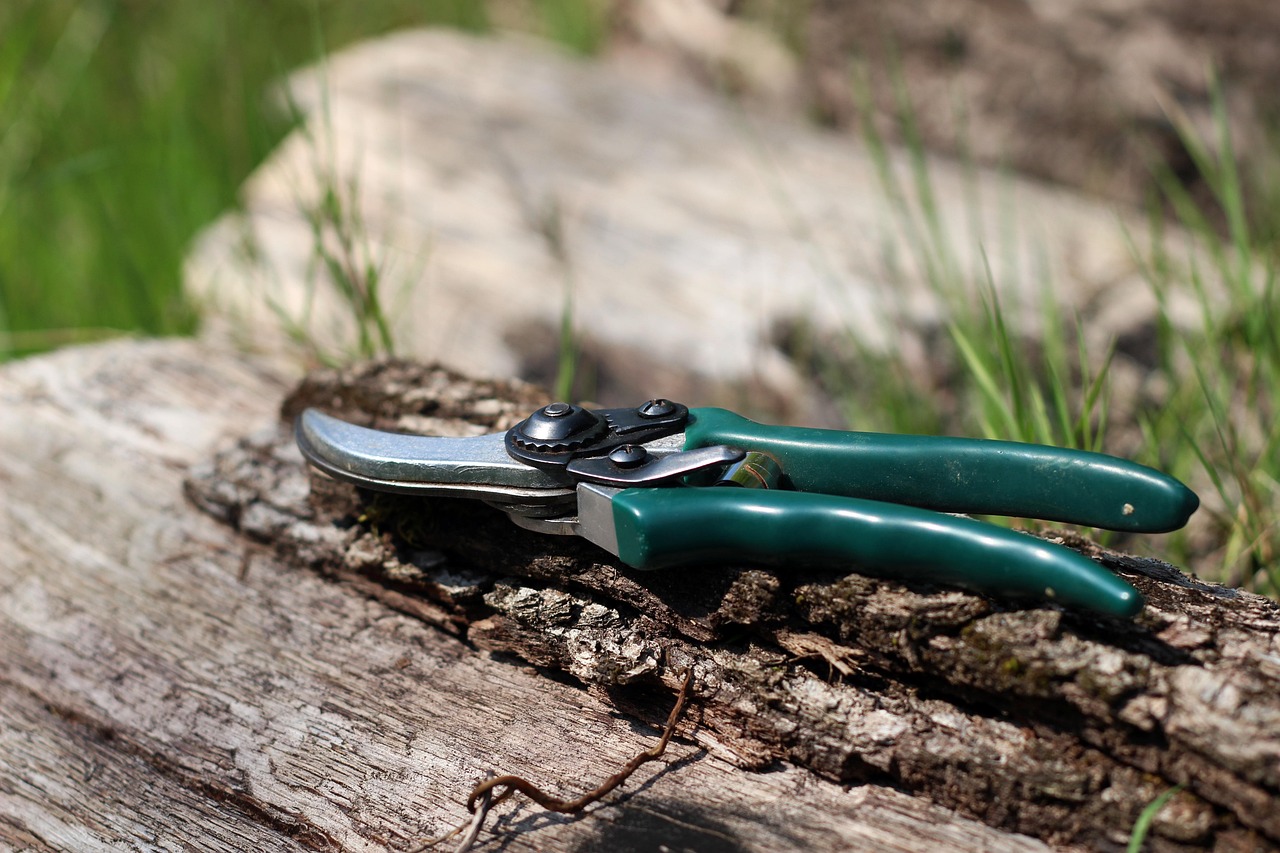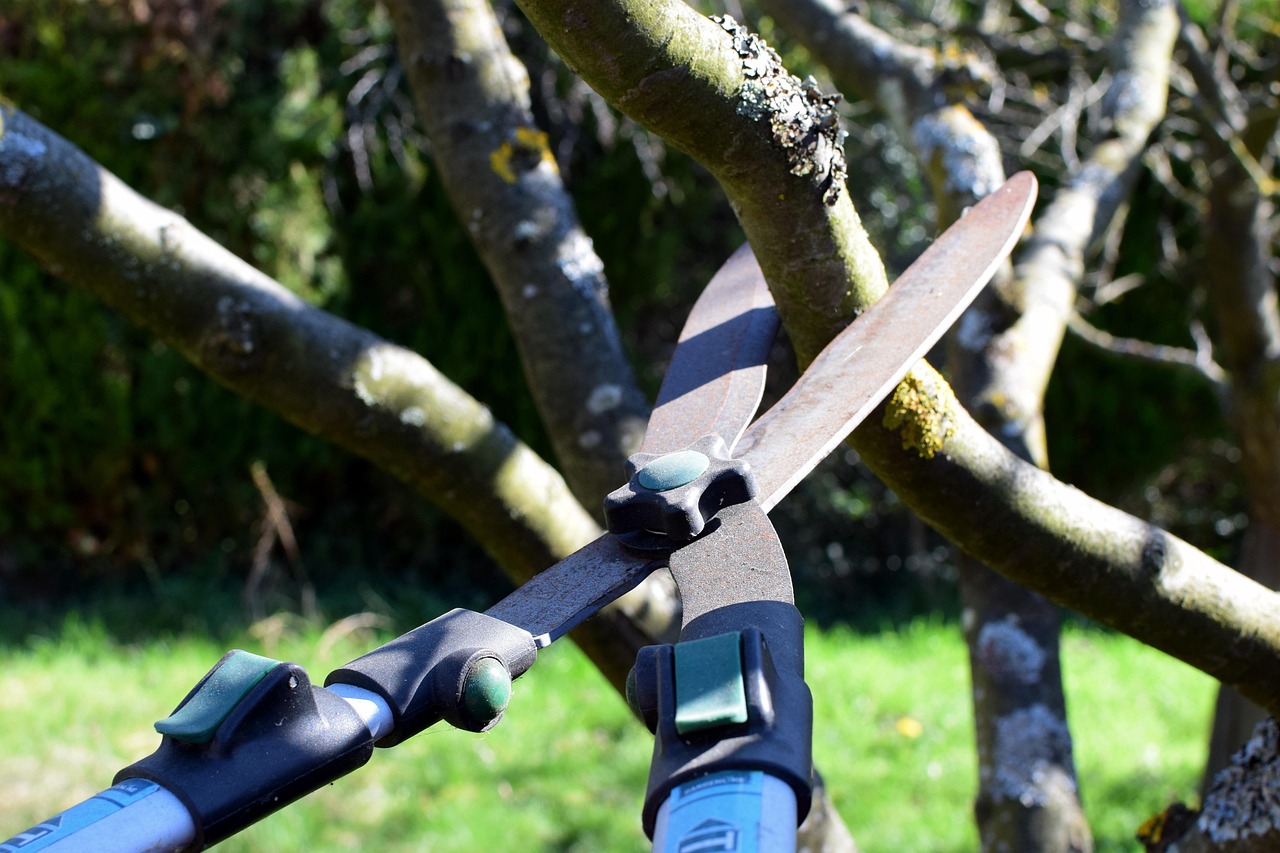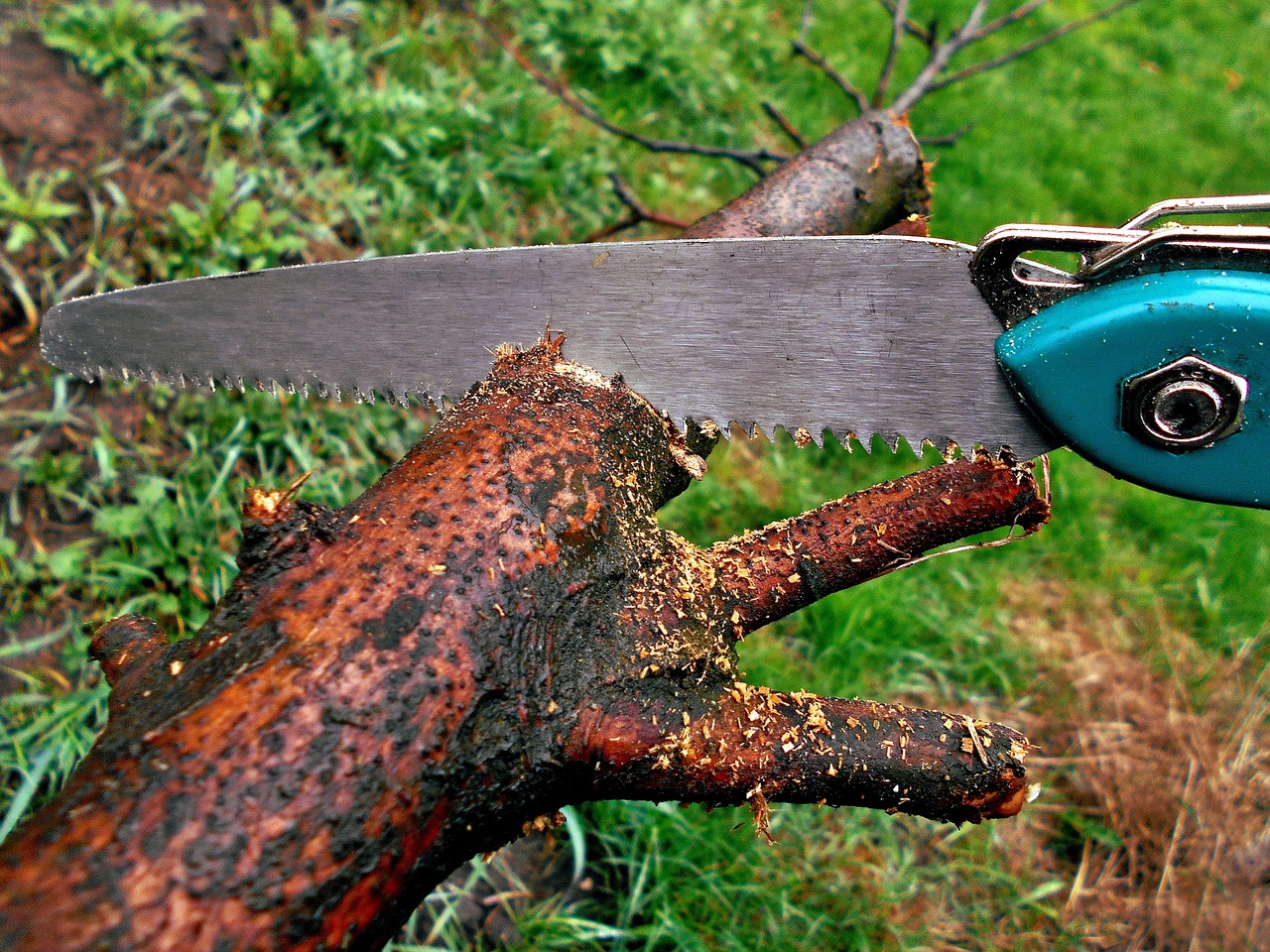Winter pruning is essential for maintaining healthy garden trees. This practice encourages strong growth, shapes the tree, and helps prevent disease. Proper timing and techniques are crucial for maximizing the benefits of winter pruning.
Winter is often seen as a dormant period for trees. However, it is also an ideal time for pruning. During this season, trees are less stressed, and their structure is more visible without the leaves. This allows gardeners to make precise cuts that promote the overall health and longevity of the tree. Pruning in winter can lead to robust growth in spring, as trees respond vigorously to the cuts made during their dormant phase.

Understanding the reasons for winter pruning can help gardeners make informed decisions. Here are some key reasons why winter pruning is beneficial:
- Encourages new growth in spring
- Improves air circulation and sunlight penetration
- Reduces the risk of disease
- Enhances the tree’s shape and structure
- Removes dead or damaged branches
Understanding Tree Growth Patterns
To effectively prune during winter, it is essential to understand how trees grow. Trees have different growth patterns based on their species, age, and environmental conditions. Typically, trees grow in cycles that include periods of dormancy and active growth. Understanding these cycles can help you determine the best time to prune.
Most trees enter dormancy during late fall and early winter. During this time, their energy is focused on root development rather than leaf or fruit production. This makes it an excellent opportunity to prune. Cutting back branches now will stimulate growth when spring arrives.

Types of Trees Benefiting from Winter Pruning
Not all trees require the same pruning techniques. Understanding which types benefit from winter pruning is crucial. Here are some common types of trees that thrive with winter pruning:
- Deciduous Trees: These trees lose their leaves in winter, making it easier to see their structure.
- Fruit Trees: Pruning helps improve fruit production and shape, leading to healthier yields.
- Shade Trees: Pruning enhances their form and prevents overcrowding.
Essential Winter Pruning Techniques
When pruning during winter, it’s important to follow specific techniques to ensure the health of your trees. Here are some essential methods to consider:
- Thinning: This involves removing specific branches to improve air circulation and sunlight exposure.
- Heading Back: Cutting back branches to promote bushier growth and a more compact shape.
- Deadwooding: Removing dead or diseased branches helps prevent the spread of disease.
- Crown Raising: Removing lower branches to allow more light to penetrate and make space for other plants.
Tools Needed for Winter Pruning
Having the right tools is essential for effective winter pruning. Here are some necessary tools you should consider:

| Tool | Description |
|---|---|
| Pruning Shears | Ideal for small branches and precise cuts. |
| Loppers | Great for cutting larger branches with more leverage. |
| Saw | A handsaw or chainsaw may be needed for thicker branches. |
| Safety Gear | Gloves, goggles, and hard hats for personal protection. |
Caring for your tools is also important. Clean and sharpen them before use to ensure smooth cutting. This prevents damage to the tree and promotes quicker healing of cuts.
Timing Your Winter Pruning
Timing is critical when it comes to winter pruning. Generally, the best time to start is during late winter, just before spring begins. This timing allows trees to heal quickly as they begin their growth cycle. However, avoid pruning during extremely cold periods, as this can stress the tree.
The ideal temperature for pruning is above freezing but below 45°F (7°C). This helps avoid damage while still allowing you to see the tree’s structure clearly. Monitoring weather patterns can help determine the best days for pruning activities.

In summary, winter pruning is a valuable practice that can greatly enhance the health and longevity of garden trees. By understanding tree growth patterns, utilizing proper techniques, and timing your efforts appropriately, you can ensure a thriving garden that flourishes in the coming seasons.
Pruning Techniques for Different Tree Types
Different trees respond uniquely to pruning. Understanding the characteristics of various tree types can lead to effective pruning strategies. Here are some common tree types and recommended pruning techniques for each:
Fruit Trees
Fruit trees, such as apple and peach trees, benefit significantly from winter pruning. This helps in shaping the tree, promoting fruit production, and removing disease-prone branches. The following techniques are particularly effective:
- Open Center Technique: This technique creates a vase-like shape that allows sunlight to penetrate the center of the tree. It encourages better air circulation.
- Central Leader Technique: This method maintains a single main trunk with horizontal branches. It is ideal for trees that tend to grow tall.
- Selective Pruning: Focus on removing weak, crossing, or dead branches to promote stronger growth.
Deciduous Trees
Deciduous trees, which lose their leaves in winter, require specific pruning methods. These trees can be pruned to enhance their structure and overall health:
- Structural Pruning: Remove lower branches to create a strong trunk structure. This promotes stability as the tree matures.
- Canopy Thinning: Selectively remove branches to decrease density and improve light penetration.
- Formative Pruning: This involves shaping young trees to guide their growth, ensuring they develop a strong framework.
Evergreen Trees
Evergreens, such as pines and spruces, also benefit from winter pruning, although the techniques differ. Pruning should focus on maintaining their natural shape while removing any unwanted growth:
- Tip Pruning: Trimming the tips of branches encourages denser foliage and helps maintain shape.
- Crown Reduction: If a tree becomes too tall or wide, reducing its crown can maintain its size without compromising health.
- Removing Dead Branches: Eliminate any dead or diseased branches to prevent decay and improve aesthetics.
Common Mistakes in Winter Pruning
While winter pruning is beneficial, it is easy to make mistakes that can harm the trees. Being aware of common pitfalls can help you avoid them:
- Pruning at the Wrong Time: Pruning too early can expose trees to harsh winter conditions, while late pruning may hinder growth.
- Over-Pruning: Removing too many branches can stress the tree, leading to weak growth and vulnerability.
- Poor Cuts: Making improper cuts can damage the tree. Always use sharp tools and cut at the right angle.
- Ignoring Tree Health: Failing to assess the tree’s health before pruning can lead to unintended damage.
The Importance of Sanitation in Pruning
Sanitation is a critical aspect of winter pruning. Keeping tools clean helps prevent the spread of diseases among trees. Here are some sanitation tips to consider:
- Disinfect Tools: Clean your pruning tools with a solution of one part bleach to nine parts water before and after use.
- Avoid Pruning Sick Trees: If a tree shows signs of disease, avoid pruning it until it has been treated or is healthy again.
- Dispose of Debris Properly: Remove any cut branches or leaves from the area to prevent harboring pests and diseases.
Signs of a Healthy Tree Post-Pruning
After pruning, it is essential to monitor the tree for signs of health and proper recovery. Here are indicators that your tree is responding well:
- New Growth: Look for budding leaves or new shoots emerging in spring as a sign of healthy recovery.
- No Excessive Sap Flow: A small amount of sap flow is normal; however, excessive sap may indicate stress or improper cuts.
- Minimal Dieback: Healthy trees will show little to no dieback on pruned branches.
Caring for Your Trees After Pruning
Caring for your trees after pruning is crucial for ensuring their long-term health. Here are several care tips to follow:
- Watering: Ensure the trees receive adequate water, especially during dry spells after pruning.
- Mulching: Apply mulch around the base of the tree to retain moisture and suppress weeds.
- Nutrient Management: Consider applying a balanced fertilizer in early spring to support new growth.
Taking these steps will help your garden trees thrive after winter pruning, setting the stage for a robust growing season ahead.
Seasonal Maintenance Beyond Winter Pruning
While winter pruning is crucial, ongoing seasonal maintenance is essential for the health of your garden trees throughout the year. Each season brings unique tasks that contribute to the long-term vitality of your trees. Understanding these tasks will help you provide comprehensive care.
Spring Care Tasks
As trees wake from dormancy in spring, it’s time to focus on several key tasks:
- Inspect for Damage: After winter, check for any damage from frost or heavy snow. Remove any broken branches or limbs.
- Fertilizing: Apply a balanced fertilizer to encourage vigorous growth. Use a slow-release formula to provide nutrients gradually.
- Mulching: Refresh the mulch around the base to retain moisture and suppress weeds. This also improves soil quality as it decomposes.
- Irrigation: Ensure adequate watering, especially if spring is dry. Newly pruned trees may need more water to support new growth.
Summer Care Tasks
Summer is a time of active growth for trees. Here are some maintenance tasks to consider:
- Pest Management: Regularly check for signs of pests or diseases. Use organic pesticides or natural remedies as needed.
- Watering Routine: Maintain a consistent watering schedule, especially during hot spells. Deep watering is more effective than shallow watering.
- Weed Control: Keep the area around the trees free from weeds that compete for nutrients and moisture.
Fall Care Tasks
As the growing season winds down, fall maintenance is vital for preparing trees for winter:
- Final Pruning: Light pruning can be done in early fall to remove any dead or diseased branches before winter sets in.
- Soil Testing: Conduct a soil test to determine nutrient levels and pH. Adjust soil conditions as necessary before winter.
- Protection from Wildlife: Consider using tree guards or fencing to protect young trees from deer and other animals during the winter months.
Advanced Techniques in Winter Pruning
For those looking to enhance their pruning skills, advanced techniques can provide even greater benefits to your trees. Here are some methods worth exploring:
Espalier Pruning
Espalier pruning involves training trees to grow flat against a wall or trellis. This technique is ideal for small spaces and creates an attractive display. Here are steps to achieve successful espalier:
- Select a Suitable Tree: Choose fruit trees or ornamental varieties that respond well to training.
- Create a Framework: Install a trellis or wires to support the tree as it grows.
- Prune Regularly: Shape the tree by regularly pruning branches to maintain its flat appearance.
Coppicing
Coppicing is a traditional technique where trees are cut back to ground level to encourage new growth. This method is particularly effective for certain species like willows and hazels. Key points include:
- Timing: Perform coppicing in late winter or early spring before new growth begins.
- Choosing the Right Trees: Not all trees can be coppiced; ensure the species is suitable for this technique.
- Managing Growth: After coppicing, manage the new shoots by selecting the strongest ones for future growth.
The Role of Soil Health in Tree Growth
The health of your soil significantly impacts the growth and resilience of your garden trees. Healthy soil promotes robust root systems and overall tree vitality. Here are some factors to consider regarding soil health:
- Nutrient Balance: Ensure that essential nutrients like nitrogen, phosphorus, and potassium are available in proper ratios.
- Soil Structure: Good soil structure allows for proper drainage and air circulation. Compacted soil can hinder root development.
- Microbial Activity: Beneficial microorganisms support nutrient cycling. Adding organic matter can boost microbial health.
Using Technology in Tree Care
Modern technology provides tools that can enhance tree care practices. Here are some ways technology can assist in maintaining your garden trees:
- Drones: Use drones for aerial surveys to assess tree health and detect pest infestations from above.
- Soil Sensors: Implement soil moisture sensors to monitor water levels and optimize irrigation schedules.
- Mobile Apps: Utilize apps designed for tree identification, pest management, and seasonal reminders for care tasks.
By integrating these advanced techniques and practices into your winter pruning routine and overall tree care strategy, you can cultivate a thriving garden that withstands the tests of time and climate.
Maintaining Tree Health Year-Round
Beyond winter pruning, there are several ongoing practices that contribute to the overall health and longevity of garden trees. Implementing these practices can help ensure that your trees remain strong and vibrant throughout the year.
Regular Monitoring and Assessment
Continuous monitoring is crucial for early detection of potential issues. Here are some effective methods to assess tree health:
- Visual Inspections: Regularly check for signs of disease, pest infestations, or physical damage. Look for discoloration, wilting leaves, or unusual growth patterns.
- Soil Sampling: Conduct soil tests annually to evaluate nutrient levels and pH balance. Adjustments can be made based on the results to improve soil health.
- Growth Measurement: Keep track of the growth rate of your trees. An unusual slowdown in growth may signal underlying problems.
Water Management Strategies
Water is vital for tree health, especially during periods of drought. Consider these water management strategies:
- Deep Watering: Encourage deep root growth by watering deeply but less frequently. This helps trees develop a strong root system.
- Irrigation Systems: Automated irrigation systems can help maintain consistent moisture levels, especially during hot months.
- Rainwater Harvesting: Collecting rainwater can provide an eco-friendly water source for your trees.
Environmental Considerations
Caring for trees also means being mindful of their surrounding environment. Here are ways to support a healthy ecosystem:
- Planting Companion Plants: Introduce beneficial plants that promote biodiversity, attract pollinators, and deter pests.
- Reducing Chemical Use: Minimize the use of chemical pesticides and fertilizers. Opt for organic methods whenever possible to protect beneficial insects.
- Diversity in Planting: Avoid monocultures by planting a variety of tree species. This can reduce the risk of widespread disease and pest issues.
Community and Resources
Engaging with local gardening communities and utilizing available resources can enhance your knowledge and skills in tree care:
- Extension Programs: Many universities offer extension programs that provide valuable information on tree care, pest management, and local best practices.
- Workshops and Classes: Attend workshops to learn hands-on techniques in pruning and tree care from experts.
- Online Forums: Participate in online gardening forums where fellow gardeners share experiences and advice tailored to your region.
Final Thoughts
Winter pruning is an essential practice that contributes to the health and longevity of garden trees. By understanding the right techniques, timing, and ongoing maintenance requirements, gardeners can foster thriving trees that enhance their landscapes. Embracing modern technology, engaging with community resources, and implementing sustainable practices further enriches this process.
The journey of tree care does not end with winter pruning; it is a continuous commitment to nurturing these vital components of our ecosystem. Each season brings new challenges and opportunities, allowing gardeners to cultivate not only beautiful landscapes but also a deeper connection with nature. By applying the knowledge and strategies discussed throughout this article, you can ensure your garden trees remain strong, healthy, and resilient for years to come.
With careful attention to their needs and a proactive approach to their care, your garden trees will reward you with beauty, shade, and fruit for generations. Happy gardening!
